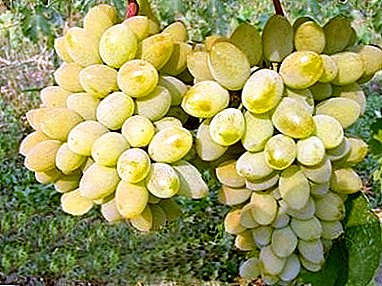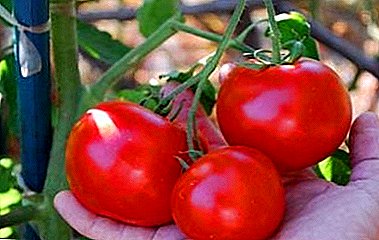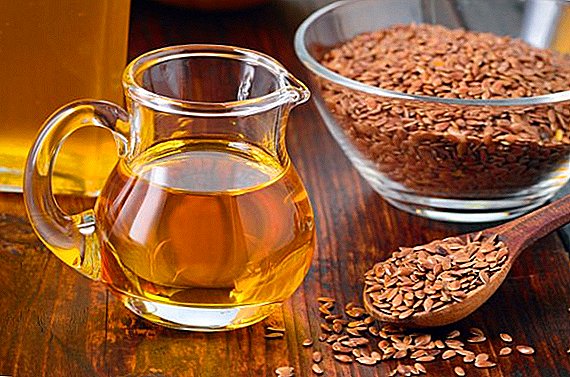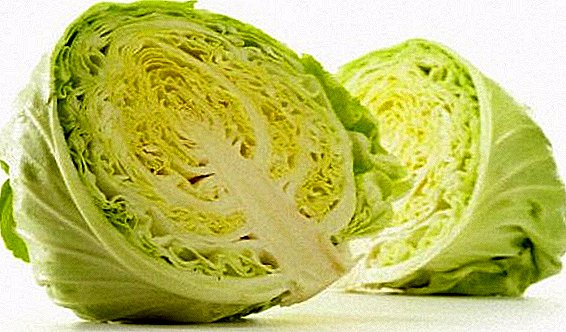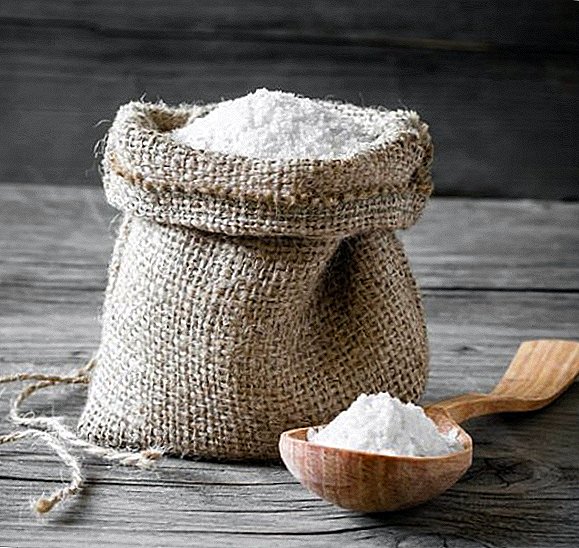 Each of us uses salt every day, without which almost any dish will seem tasteless. Sometimes we can replace it with flavoring seasonings, however some amount of this mineral will still be present in them. Without salt, it is impossible to preserve vegetables, meat or fish. Today we will learn more about what this product is, why it is necessary for our body, and whether there is a connection between the weight and the amount of salt consumed.
Each of us uses salt every day, without which almost any dish will seem tasteless. Sometimes we can replace it with flavoring seasonings, however some amount of this mineral will still be present in them. Without salt, it is impossible to preserve vegetables, meat or fish. Today we will learn more about what this product is, why it is necessary for our body, and whether there is a connection between the weight and the amount of salt consumed.
Chemical composition
To begin with, that is part of the usual product for us, which we use daily.
It would seem that this mineral should consist of two elements - sodium and chlorine, which is indicated by the chemical formula (NaCl). But not everything is so simple, because salt is mined in various areas, it is obtained both from sea water and by extraction from quarries. It is for this reason that it has in its composition other substances that are not written on the package.  Immediately it should be said that its nutritional value and calorie content are zero, because before us is a mineral, not a plant or animal product. At the same time in 100 g of the product there is about 0.2 g of water, however, salt is a hydrophilic granular substance, therefore it is prone to liquid accumulation.
Immediately it should be said that its nutritional value and calorie content are zero, because before us is a mineral, not a plant or animal product. At the same time in 100 g of the product there is about 0.2 g of water, however, salt is a hydrophilic granular substance, therefore it is prone to liquid accumulation.
The composition includes such minerals:
- potassium;
- calcium;
- magnesium;
- sodium;
- phosphorus;
- chlorine;
- iron;
- cobalt;
- manganese;
- copper;
- molybdenum;
- zinc.
Important! 10 g of salt contains almost three daily intake of sodium and 2.5 daily intakes of chlorine, which is why these elements are distinguished in the chemical formula.
Types of salt
Immediately it should be said that we will focus on the types of food salt.
The main types that you can find on store shelves:
- "Extra";
- iodized;
- cooking or stone;
- sea;
- black
- dietary.
"Extra". Contains nothing but sodium and chlorine. In fact, it can be compared with distilled water, in which only water molecules are present, without other impurities. This option is made using water evaporation and soda treatment. There are no useful micro and macro elements in it, therefore it does not differ in value.
It is also worth mentioning that special substances are added to such a product so that it remains free-flowing.  Iodized. A fairly common option, which is a rock salt with the addition of iodine. It is useful for people who suffer from iodine deficiency, which results in problems with the thyroid gland. The iodinated variant is used for dishes that do not undergo heat treatment, since at high temperatures iodine simply evaporates, as a result of which beneficial properties are lost.
Iodized. A fairly common option, which is a rock salt with the addition of iodine. It is useful for people who suffer from iodine deficiency, which results in problems with the thyroid gland. The iodinated variant is used for dishes that do not undergo heat treatment, since at high temperatures iodine simply evaporates, as a result of which beneficial properties are lost. 
Important! The shelf life of iodized salt is 9 months.
Cookery and stone. The most common options that cost a penny and are sold everywhere. Cooking differs from stone in that it undergoes chemical treatment and cleaning, and the second only gives in to clarification. Cooking version of the value is comparable to the "Extra".  Sea This species is considered to be the most useful for the organism, since it contains many micro and macro elements. Get the product by evaporation of sea water, and then carry out the cleaning.
Sea This species is considered to be the most useful for the organism, since it contains many micro and macro elements. Get the product by evaporation of sea water, and then carry out the cleaning.  Interestingly, sea salt is more salty, so it takes less to give the necessary flavor to the dish. This has a positive effect on water-salt metabolism, and as a result, less excess fluid is retained in the body.
Interestingly, sea salt is more salty, so it takes less to give the necessary flavor to the dish. This has a positive effect on water-salt metabolism, and as a result, less excess fluid is retained in the body.
Black A rare species that differs not only in price, but also in use. It is easiest to characterize it as "a mixture of salt and activated carbon", since black salt not only performs the basic function, but with constant use removes slags from the body, and also produces a slight laxative effect, which is extremely important because an excess of this product provokes the accumulation of fluid . 
Important! The black variety has an unpleasant taste.
Dietary. The name itself is extremely controversial, since the diet product must contain a minimum of fat and calories, and salt does not have any nutritional value and caloric content. Interestingly, in this embodiment, the concentration of sodium is reduced, and magnesium and potassium are also added. That is, it is no longer a natural salt, since its composition has been expanded artificially. Dietary salt is intended for people who suffer from various diseases and have a need for certain minerals. 
Beneficial features
Consider the useful properties of salt, to know how you can use it in addition to the standard application.
Since it is a substance that is almost entirely composed of sodium and chlorine, it is first necessary to talk about the effect of these minerals on our body.
Video: the benefits and harm of salt
Sodium
Salt contains just a huge amount of this element, so one teaspoon can cover daily need for sodium. But why does the body need sodium? In fact, this mineral is found in our bones, cartilage, and cells.
In fluids such as blood, bile, gastric juice, cerebrospinal fluid, sodium is also present. It is part of even breast milk. It turns out that in the absence of this element, a person will begin problems with the musculoskeletal system, as well as dysfunction at the cellular level.
Sodium is involved in maintaining acid-base balance. This means that in its absence, the blood will become too acidic or, conversely, alkaline. Such changes in pH adversely affect the body as a whole, resulting in various diseases.
Did you know? Salt is used to clean the aviation fuel. It is added to remove all the water.
Sodium plays an important role in water-salt metabolism. This is a complex process, which is the proper absorption and distribution of fluid entering the body from the outside. That is, sodium helps the body to redistribute moisture so that the organs receive its necessary amount and work normally. It also controls the excretion of fluid from the body.  Mineral is responsible for the osmotic pressure of fluids in the body. You should know that osmotic pressure is not directly related to blood pressure, so you can not identify these concepts.
Mineral is responsible for the osmotic pressure of fluids in the body. You should know that osmotic pressure is not directly related to blood pressure, so you can not identify these concepts.
If you do not delve into the chemistry, then we can say that the viability of blood cells, as well as many other sensitive tissues, depends on this pressure. When osmotic pressure decreases or increases, the body begins to remove or accumulate water and salt, which may adversely affect the functioning of organs.
Sodium is needed in the nervous system. It contributes to the proper functioning of nerve endings and the transmission of nerve impulses. It is used for the normal functioning of the muscular system, and is also necessary for the kidneys and the liver to absorb nutrients.
Chlorine
Chlorine, which is part of the mineral, is just as important for our body as sodium.
You should start with the fact that chlorine is needed for the formation of hydrochloric acid, which enters the stomach during meals and contributes to its digestion. Without hydrochloric acid, food in your stomach will lie for months, as the body itself does not affect the breakdown of food eaten.
Did you know? Only 6% of the total salt mined in the world is used for food. By comparison, 17% of the substance is used for sprinkling streets during icing.
This substance is necessary for proper breakdown of fats. This means that in the absence of it, any incoming fat will simply be removed from the body, and not absorbed.
Chlorine also contributes to the formation and growth of bone tissue; therefore, in its absence, the bones will be renewed more slowly, and rickets may occur in children even if the amount of calcium and potassium is normal.  We should also say that salt is necessary for people who have been diagnosed with type I diabetes, as it regulates blood sugar levels, thereby reducing the amount of insulin that must be supplied from the outside.
We should also say that salt is necessary for people who have been diagnosed with type I diabetes, as it regulates blood sugar levels, thereby reducing the amount of insulin that must be supplied from the outside.
Salt application
Next, learn how to use salt, not only in cooking, but also in other areas. Consider the medicinal value of the mineral.
In medicine
Application in folk medicine due to the fact that salt has antibacterial properties, so it can destroy bacteria in the same way as alcohol.
Let's start with the simplest recipe, which resorted to everyone who has ever had a sore throat or had a runny nose. A mixture of soda, salt and water helps not only to destroy the pathogenic flora, but also soften the mucous membrane. It is for this reason that such a remedy is not a waste of time, but a really good antiseptic.
Learn how in traditional medicine are used: skumumpia, sandy immortelle, alder seedlings, yellowcone, mullein, medicinal zamaniha, willow-tree, calamus swamp, flaxseed, potato flowers, shepherd's grass bag, hillwort, and carrot tops.
Since this mineral prevents decomposition and decay, as a last resort, when there are no other means, it can be used to disinfect the wound. In this case, the sensation will be unpleasant, but it is better than extensive tissue rot or infection of the blood.
If you ever got to the hospital with poisoning, then you first of all put a drip with glucose. The composition of this liquid also includes salt. It is precisely it that saves from poisoning, intoxication and further loss of fluid, since vomiting or diarrhea occurs during poisoning. But glucose is added in order to provide you with the necessary energy during the period when you can not consume food.  Saline compresses are used to relieve swelling from limbs or other parts of the body. The point is that salt penetrates the skin into the tissues, after which the body begins to actively remove the liquid in which the concentration of this mineral is increased.
Saline compresses are used to relieve swelling from limbs or other parts of the body. The point is that salt penetrates the skin into the tissues, after which the body begins to actively remove the liquid in which the concentration of this mineral is increased.
As you can see, this mineral is used not only in traditional medicine, but also in traditional medicine. At the same time, traditional medicine uses precisely those properties that we talked about above. So, for example, a 10% salt solution in water is used to raise the pressure in case of serious blood loss, as well as in brain edema.
In cooking
Of course, you can not do without the use of salt in cooking. It is used in the preparation of almost all dishes, given even the sweetness. It improves the taste of any dish, without it the food will seem fresh or tasteless.
In cooking, as in medicine, this mineral is used to disinfect food. It is due to its antiseptic properties that we can pickle fresh fish or meat, and then use these products without additional processing.  Before the invention of the first refrigerators, salt was used everywhere as a preservative, since it was necessary to preserve perishable foodstuffs. In addition to salting, drying was used, but not all products could be dried, and this process was also lengthy.
Before the invention of the first refrigerators, salt was used everywhere as a preservative, since it was necessary to preserve perishable foodstuffs. In addition to salting, drying was used, but not all products could be dried, and this process was also lengthy.
We recommend that you familiarize yourself with the recipes for salting cucumbers, tomatoes, mushrooms and lard.
In other areas
Salt is used in cosmetology to create various scrubs. As it does not differ in high cost, it is added to various means which are intended for cleaning of skin.
This mineral is present in many shampoos, shower gels, creams. Its role is to supply the skin with minerals, and also to clean it from dead particles. With regular use of such funds, the skin becomes silky, and the pores are reduced to normal size. The appearance of acne due to blockage of the sebaceous canals is excluded.
Salt and weight loss
Note that the salt itself does not affect the discharge or weight gain, because its caloric content is zero.
It is often written in various journals that a salt-free diet will help you lose weight, but this is not quite true. To say that giving up salt will help reduce weight is the same thing as giving up water for weight loss.  It is important to remember that salt retains moisture in the body, and when this mineral is abandoned, there is no feeling of thirst. This leads to the fact that you practically stop drinking water. Yes, you begin to lose weight, but weight loss occurs due to the removal of fluid from the body, so you can soon get to the hospital with dehydration.
It is important to remember that salt retains moisture in the body, and when this mineral is abandoned, there is no feeling of thirst. This leads to the fact that you practically stop drinking water. Yes, you begin to lose weight, but weight loss occurs due to the removal of fluid from the body, so you can soon get to the hospital with dehydration.
If the meaning of the diet is that the body can get the necessary moisture by splitting the fat, then this is a very bad weight loss option.
First of all, water is needed to remove poisons that are released even during the processing of very healthy food, respectively, water must constantly flow and be excreted in the form of urine and sweat.
Secondlyto break down fat in order to get water is not a five-minute lesson, so one way or another, you will suffer from dehydration.
People who want to lose weight, you need to include in your diet: lagenaria, flax seeds, white radish, squash, cress, celery, radish, spinach, savoy or cauliflower.
Thirdly, the lack of salt will lead to dysfunction at the cellular level, because of what you will feel just awful, and you can immediately forget about any productive activity.
You can make the following conclusion: if you refuse salt, then you will have such problems, before which the extra weight will seem just a trifle.
At the same time, the mineral can still help you lose a few pounds.  To do this, you should abandon the salt or "Extra" and go to the marine version. This is due to the fact that this version of the product is more saline, while the amount of consumed product is reduced.
To do this, you should abandon the salt or "Extra" and go to the marine version. This is due to the fact that this version of the product is more saline, while the amount of consumed product is reduced.
Spicy and salty foods stimulate appetite, as well as the production of saliva and gastric juice. This means that eating too salty foods indirectly contributes to weight gain.
Important! 9 g of salt retain 1 kg of water in the body. The combination of salt and alcohol increases the amount of water retained.
Daily need
The daily need for salt is about 10 g per day.. Such an amount is necessary for an adult to ensure the normal functioning of organs and body systems.
The need for salt increases in the summer when sweating increases. Also, it should be used more by those people who are engaged in hard physical labor. The same goes for athletes.
But to reduce salt intake is necessary if you have been diagnosed with the following diseases:
- urolithiasis disease;
- pancreatic problems;
- kidney disease;
- problems with the cardiovascular system;
- poor blood supply to the brain.
Separately, it should be said about the need for salt in the child. Children under 9 months do not need it. Starting from 18 months, the need is up to 2 g per day. A child from 7 to 10 years old should be given up to 5 g of salt.  Consumption also varies with climate. In a hot climate, you need to use almost double the norm, since you need to retain moisture in the body. In cold climates, the rate can be reduced, because you practically do not sweat, doing the same amount of work.
Consumption also varies with climate. In a hot climate, you need to use almost double the norm, since you need to retain moisture in the body. In cold climates, the rate can be reduced, because you practically do not sweat, doing the same amount of work.
Contraindications
It is impossible to completely eliminate salt from the diet, since it is contained in many vegetables that we consume daily. However, it has its own contraindications, which force to reduce the use to a minimum.
It is forbidden to add some salt to food if you have been diagnosed with serious kidney disease, have serious tissue edema, or you suffer from diseases of the cardiovascular system that directly threaten your life.
A positive effect on the state of the cardiovascular system have: hellebore, Chervil, cumin, zyuznik and honeysuckle.
You will still use this mineral in one form or another, so we are talking more about reducing consumption to a minimum, rather than a complete failure.
Harm and side effect
As you might guess, the harm and side effects are associated with excessive salt intake. At the same time, popular recipes that suggest its external use can also provoke an overabundance of it.
To begin with, swelling appears from excessive salt. Your heart also starts to suffer due to an increase in osmotic pressure. Excess fluid in the body accumulates, although it should be used to remove waste cells. As a result, poisoning may occur.  In addition, too much of this mineral adversely affects vision, causing it to deteriorate. If you have had myopia or farsightedness before, then you will see even worse. For people with joint problems, too much salt can also cause a rapid deterioration.
In addition, too much of this mineral adversely affects vision, causing it to deteriorate. If you have had myopia or farsightedness before, then you will see even worse. For people with joint problems, too much salt can also cause a rapid deterioration.
It is worth remembering that poisoning this mineral is very simple, because it is enough to eat 3 g of salt per 1 kg of weight to die. At the same time, your blood pressure will not only increase, but also pulmonary and brain edema will begin. We provide these data so that you understand how dangerous it is to use too much of this product.
Products containing a high amount of salt
Rye bread. It would seem that bread cannot contain much of this substance, because you can't tell it to your taste. Yes, it is not enough in it, but at the same time there is a lot of soda, which also contains sodium. Therefore, when you eat 100 grams of rye bread, you get about 19% of the daily intake of sodium.
Sauerkraut. This sour fortified dish is prepared using the product in question. However, many additionally salted sauerkraut, increasing the amount of sodium chlorine entering the body. 100 g contains about 29% of the mineral from the daily value.  Cornflakes. Do not be surprised that the sweet delicacy contains a similar seasoning, because it enhances the taste. In addition, corn flour itself also contains a lot of sodium, which is why, having consumed 100 g of dry product, you will receive 32% of the daily value.
Cornflakes. Do not be surprised that the sweet delicacy contains a similar seasoning, because it enhances the taste. In addition, corn flour itself also contains a lot of sodium, which is why, having consumed 100 g of dry product, you will receive 32% of the daily value.
Sausages. A lot of salt is added to all sausage products. It is for this reason that you can cover daily needs by eating only 4 medium sized sausages.
Cheese. In many varieties of cheese, including processed cheese, there is too much of this mineral. So much that by consuming 150 g, you will cover the daily rate. This statement does not apply to mozzarella cheese, as it contains very little salt.
Soy sauce. Even the taste of this product suggests that the salt producer was not sorry. However, when you learn that 100 g of the product contains 2.5 daily allowances, you will understand why soy sauce is not recommended for use in diseases associated with the excretory system. Soy sauce in Asia is used as a substitute for the mineral, because all their products are fairly lean, which is why a minor use of the product does not affect their health, but we should limit the amount of soy sauce in the daily menu.  Soy products for vegetarians. In this case, the mineral compensates for the absence of a pronounced taste in "fake products". So, in soy meat - 1.7 g of salt per 100 g of product, which is very much, even in comparison with soy sauce, because you use the sauce in small quantities, but low-calorie meat still needs to satisfy hunger.
Soy products for vegetarians. In this case, the mineral compensates for the absence of a pronounced taste in "fake products". So, in soy meat - 1.7 g of salt per 100 g of product, which is very much, even in comparison with soy sauce, because you use the sauce in small quantities, but low-calorie meat still needs to satisfy hunger.
Not everything that does not contain salt that is unsalted. Salt is also found in fruits and vegetables: pumpkin, apple, rosehip, dates, orange radish, banana, beetroot, broccoli.
Products that remove salt from the body
To complete the article we will be products that will help to remove the excess mineral from the body:
- any kind of rice;
- black radish juice;
- potatoes;
- bay leaf (used infusion);
- fresh cucumbers;
- celery;
- parsley;
- strawberries;
- carrot;
- spinach.
 The above products in one degree or another will help you get rid of excess salt. They can also be consumed if you are going to eat a salty dish and do not want to harm the body.
The above products in one degree or another will help you get rid of excess salt. They can also be consumed if you are going to eat a salty dish and do not want to harm the body.Did you know? Surplus sodium can be blocked by the presence of a sufficient amount of potassium. Potassium enters our body with tomatoes, parsley and many fruits.
Now you know almost everything about what the mineral in question is, what role it plays in our body, and whether it should be consumed in large quantities. The food industry offers us daily hundreds of products in which there is a considerable dose of salt. Therefore, do not be lazy to check the composition for its presence, and then you will know whether to additionally salt the dish or better to replace this mineral with other seasonings that will improve the taste.



